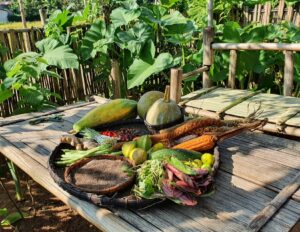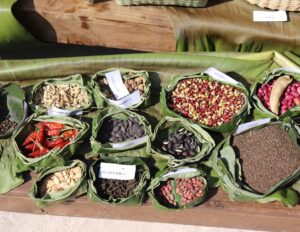A technical training on pest management was organized by NESFAS at Samingre in West Garo Hills on the 10th of May, 2022. A progressive farmer, Shri. Rajesh. B. Marak, from the village of Darechikgre, West Garo Hills, facilitated the training in the presence of NESFAS team.
Marak has been carefully studying and observing his chayote plants for years now and after much experimentation and failed attempts to control pest such as squash bugs, came up with this tried and tested recipe of mixing organic substances and has reaped success significantly.
“The unending menace of pest infestation on my chayote plants had me worried. The pests would reside on the tender leaves and feed on the shoots. The plants in turn, bear no fruit. I tried all means and failed and finally came up with this solution. This method will help you to combat the vexing problem of pests and insects and you don’t even have to buy them as they are abundantly available everywhere and one can acquire them without spending a single rupee”, Marak addressed during the training.
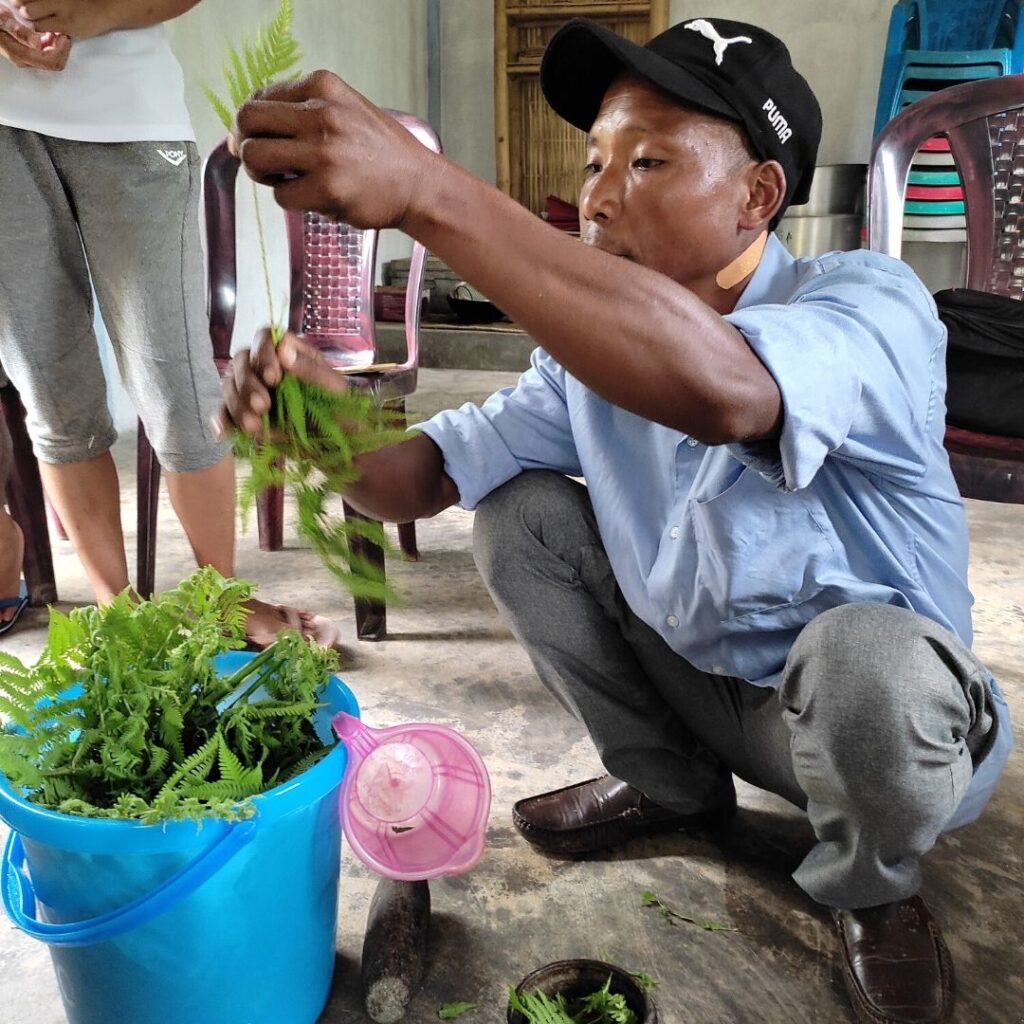
Marak went on to demonstrate his method for which he brought along Neem leaves, garlic cloves, fern leaves and castor leaves. After grinding the ingredients to a fine paste using mortar and pestle, he mixed them with water and strained the mixture with a cloth, filled it up on a spray bottle and sprayed on the plants. He also went on to say that one should be careful so as not to overuse the ingredients. For best results, he advised adequate proportions of each ingredient including water. About 100 grams each of Neem and Fern leaves are to be added to about 50 grams each of garlic and castor leaves, and the paste is to be mixed with about 2 litres of water. This will be adequate to spray in an area of about 600 square feet. For a larger area, or for making more quantities of the mixture, the ingredients are to be doubled or tripled accordingly. One should however, be careful about not adding too much of ingredients as opposed to the acceptable ratio. This may result in wilting of the plants. It is best to apply this solution when the sun is not scorching hot.
Chemical solutions and pesticides may for one, get rid of insects, but it is not advisable for many other reasons. It is harmful for the soil; the fruits will be contaminated with chemicals and thus, is unfit for consumption, and is not always pocket friendly.
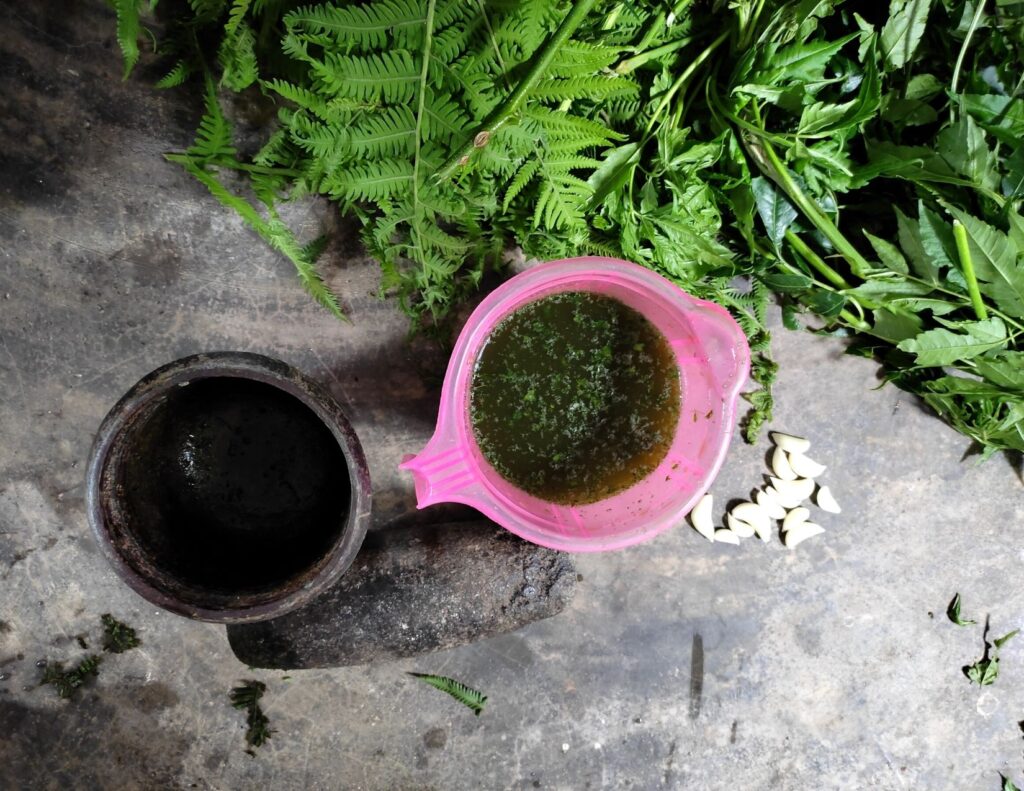
“The fern leaves have a sharp component. You will know this if you touch the paste, or even brush your bare hands against the leaves and feel the sensation afterward. Garlic has a pungent smell. Castor and Neem leaves have also been found to ward off insects. Grinding these ingredients releases the juices which repel pests. This solution can not only be used for chayote plants, but also for many other plants and flowers as well,” Marak was further quoted as saying.
Indigenous solutions as such are aplenty among knowledge holders in rural communities. If more of such knowledge holders and progressive farmers can come together and pool in their knowledge, chemical solutions can come to a close. NESFAS aims at discovering these knowledge holders and providing them a platform to share, learn and exchange their knowledge learned from their forefathers or acquired through trial and error.
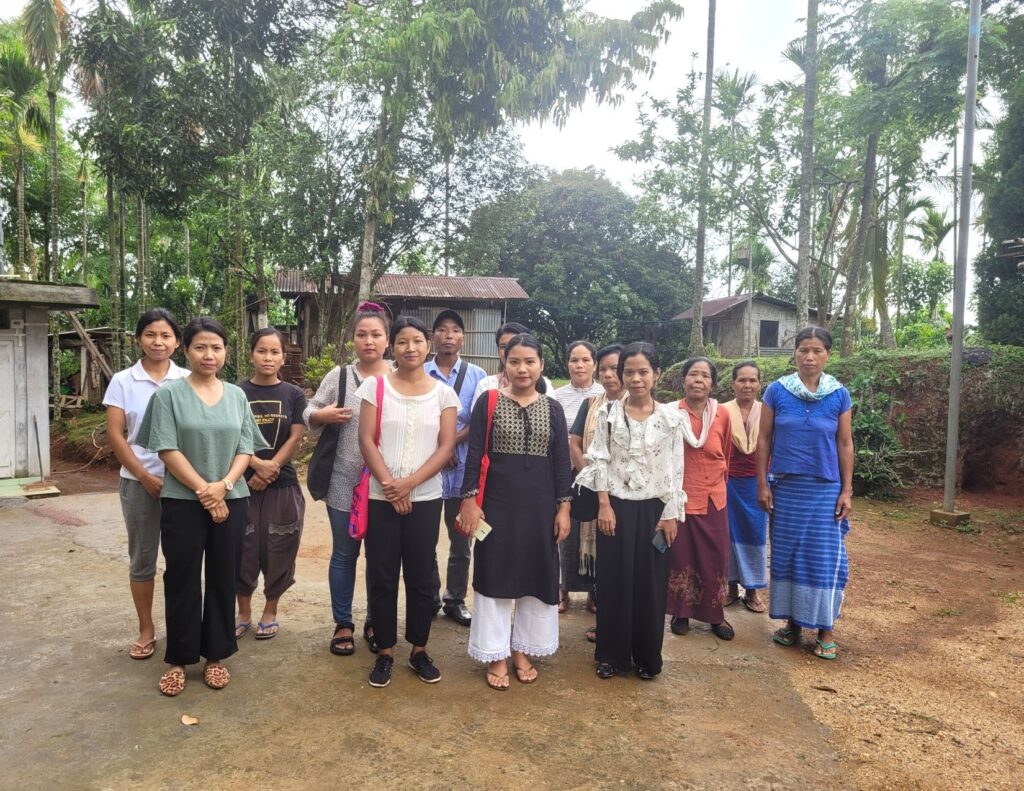
Marak hopes that with his learning, many other farmers will be benefitted. The world of sustainability is pinning their hopes on farmers like Marak and their innovative solutions as more people grow conscious about tracing their food from farmer to fork. With learning opportunities like these, surely many more farmers will outgrow their relationship with chemicals and make their way towards sustainability and organic living.
Shri. Rajesh B. Marak is an Agroecology Learning Circle (ALC) member under the NESFAS project “Empowering Indigenous Communities through Agroecology Learning Circles (ALCs) for resilient, integrated and innovative natural resource management.” Supported by MBMA and funded by the World Bank.

